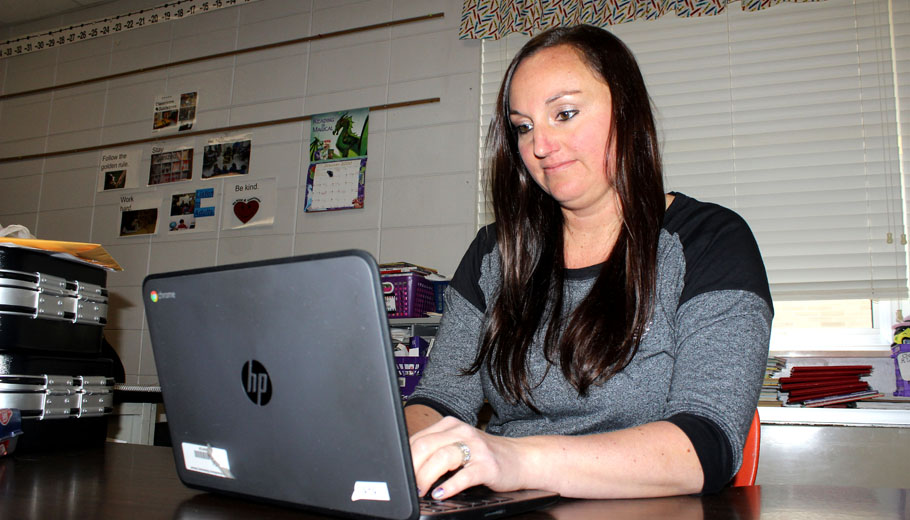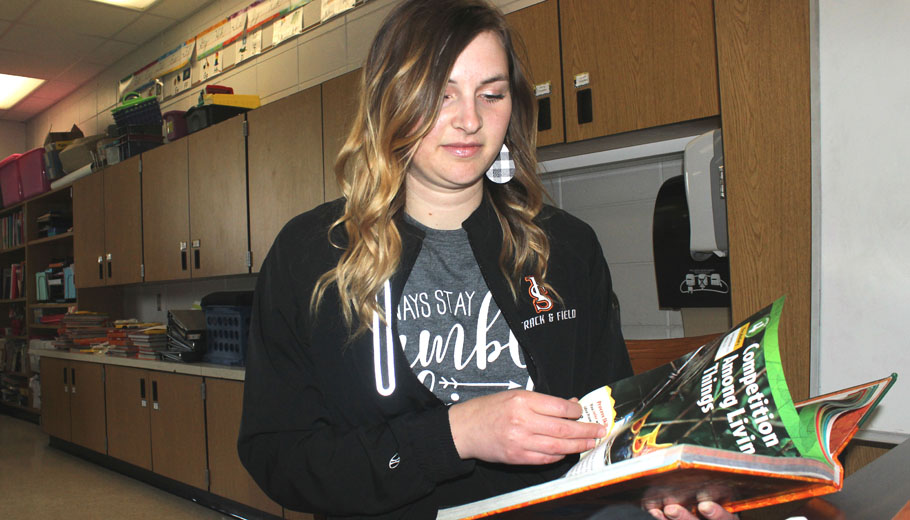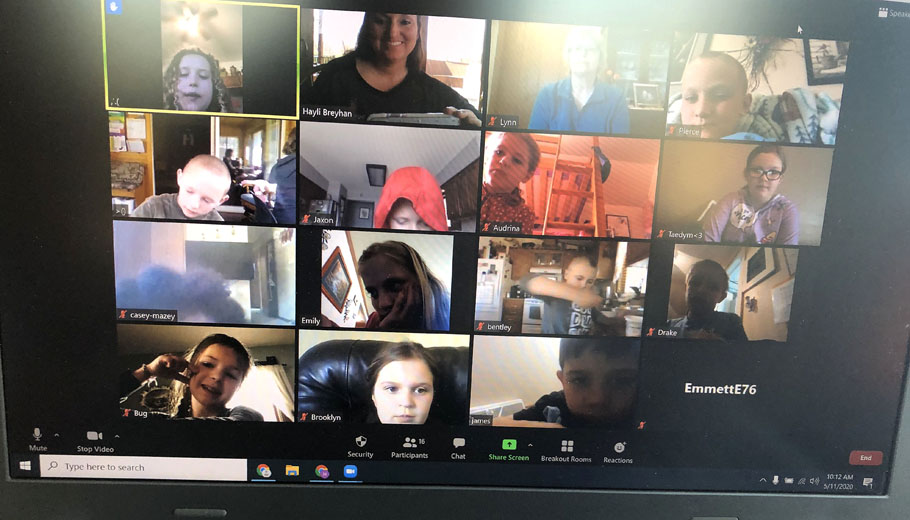Teachers, students deal with distance learning
By Greg Seubert
Hayli Breyhan and Emily Minniecheske are used to working together.
They still do, but don’t see each other much these days.
The pair are wrapping up their fourth school year as a third-grade teacher at Iola-Scandinavia Elementary School in Iola.
Like thousands of other teachers across Wisconsin, they’ve been using websites and emails to teach their students since the state’s latest Safer at Home order closed all schools through at least June 30 because of the COVID-19 pandemic.
“I feel like I adjusted better than some just because I already include a lot of technology into my teaching,” Breyhan said. “I have a lot of background knowledge on technology and my classroom is already set up on a technology platform. I’m pretty comfortable with technology, but you still need to learn a lot of new things in order to teach using strictly technology. I did have to learn quite a few new things or get better acquainted with those things that I maybe had a little bit of knowledge on.”
“I’m comfortable with using technology and we work together a lot, so we’ll share ideas,” Minniecheske said. “If we find something neat to do, we’ll share it with each other.”
Working together
Breyhan said she and Minniecheske are part of a professional learning community.
“We plan everything out together and follow the same pacing with our lessons,” she said. “We decided right away to create a Google Doc together. We share siblings and we want them to get the same thing right now so we’re not trying to teach them two different things. It’s been nice to share that load and work together. I’m doing a lot of Zoom meetings with staff members and Emily and I meet once a week to go over all of our curriculum and have discussions about our lesson plans.
“We use Seesaw learning portfolios and the kids have been uploading their learning all year long,” she said. “That’s what I’m now using to send lessons for them to watch and they listen to Read Alouds. They post whatever it is they want to share with me back. They know how to navigate that. We had to do a lot of reaching out over the phone to help with that.”
Both teachers spend a few hours one day a week at the school and the rest of their work day at home.
Their daily schedule includes online meetings with their students.
“That was one of the kids’ favorite times of the school year,” Breyhan said. “We have a morning meeting to get started with our day to welcome everybody and go through the daily events. We still do that right now. My favorite time of my day is the virtual meeting, the face-to-face interaction. What we’re doing doesn’t compare to the regular classroom. We’re trying our best to reach every child and we’re getting as many as we can. That morning meeting when we see them just uplifts our spirits.”
“I think that was the hardest part, saying good morning every morning and being around and hearing their stories,” Minniecheske said. “I do get to see the kids through Google Meet every morning. It’s nice to see them every day and hear from them, but it’s not the same as actually being there with them.”
Breyhan and Minniecheske team up to create five-minute lessons for their students.
“That five-minute lesson takes at least an hour of planning time and practice to get it out there,” Breyhan said. “It’s so important to make it right in such a short period.”
“It was hard because we didn’t know how much we should plan or what kinds of lessons we should do,” Minniecheske said. “We didn’t know if we would be coming back in three weeks or if it would be the whole year. We had to plan for both until we found out for sure. Now that we have a system down, it’s much easier. We planned it all out ahead of time and now, we’re just looking at those plans and going from there.”
Dealing with COVID-19
“I am so proud to work in the district I work in,” said Breyhan, in her 13th year of teaching. “Things change every day and I think we have handled it wonderfully. I’ve had a lot of great feedback from families and I’ve been reaching out to get feedback on how to better support them. I’m doing individual meetings with families through Zoom each week. That’s when they get to ask me questions and I can see how it’s going for them.
“Everyone’s doing their best and our message to them is to do your best in this situation,” she added. “Our No. 1 priority is the mental health of everybody throughout this, helping support the learning that is taking place and continuing to grow from where we were when we last saw them.”
COVID-19 caught teachers and administrators off-guard, according to Breyhan.
“Everyone had different feelings, but I know from the tears from the staff members when we found out and the looks on peoples’ faces that this would now be our new reality and that this was going to be emotionally challenging,” she said. “We do this because we love kids and want to be around kids. It’s very hard on all of us and we’re hoping to get back to normal as soon and as safely as possible.”
“We have a really supportive community and really great parents, teachers and administration,” Minniecheske said. “We’re all working together and communicating with each other on what we’re doing. We have really great educational assistants here that help sort out materials to send out to the kids each week. Everyone working together really helps.”
While some teachers and parents have struggled with a new normal, Minniecheske said that’s not the case with most of her students.
“I’ve noticed a difference in the kids where in the beginning, a lot of them were fearful or scared of this,” she said. “Now, they seem more aware of what’s going on and more calm about it. They don’t bring it up much in our morning meetings anymore.
“I’m getting a lot of work turned in that they’re doing at home,” she said. “When I send out surveys asking how they’re doing, a lot of them say they’re doing good and getting their work done. They seem to be handling it well.”



